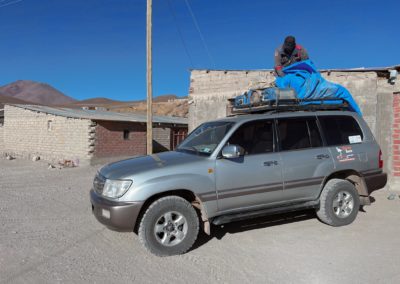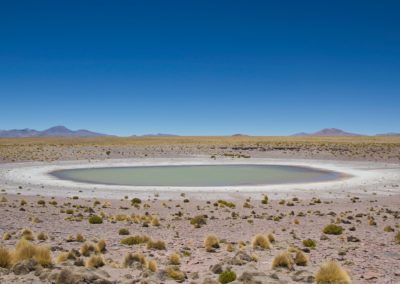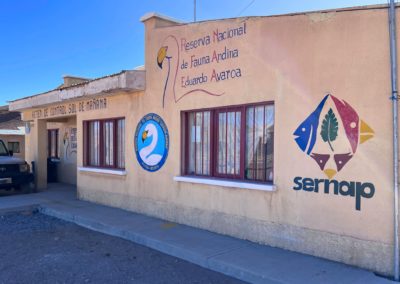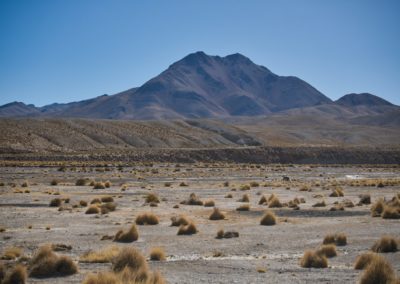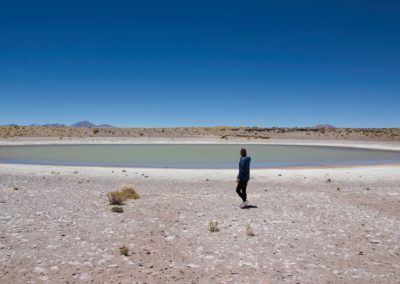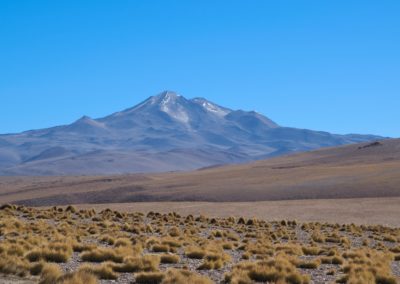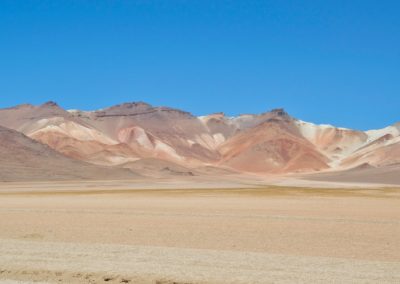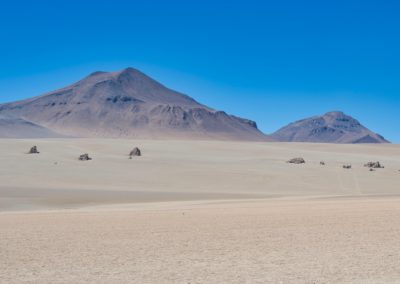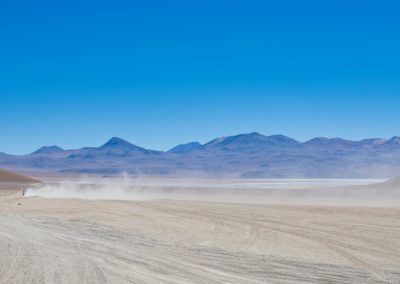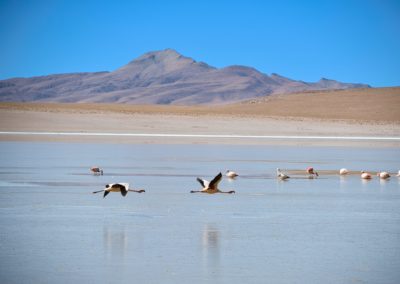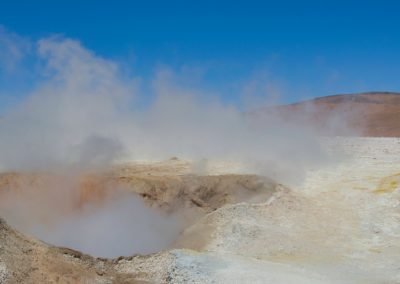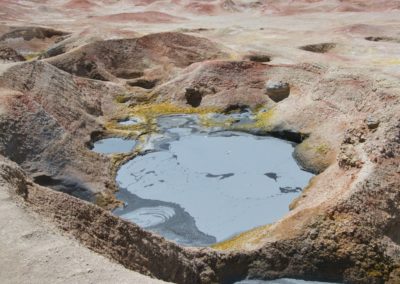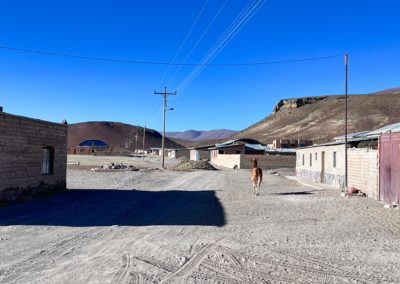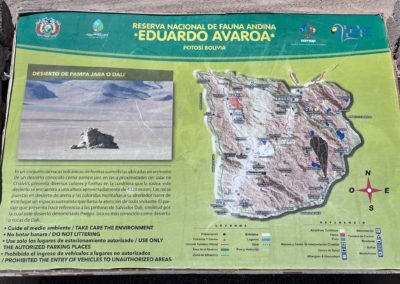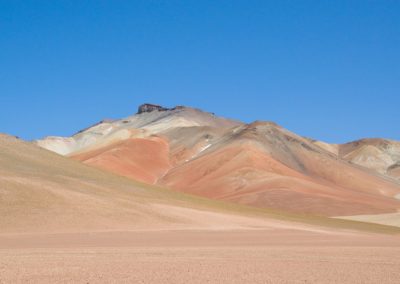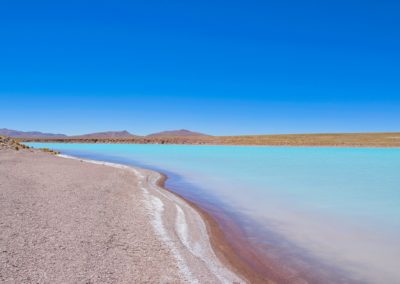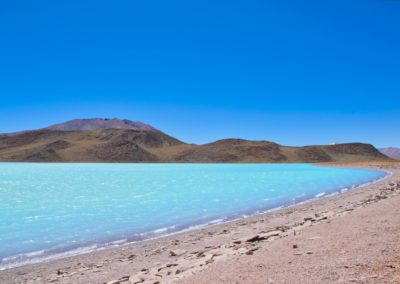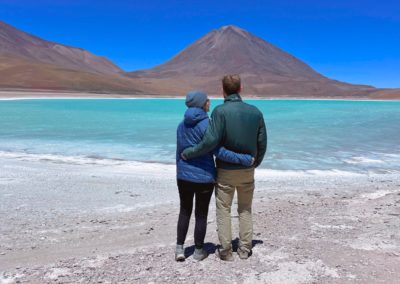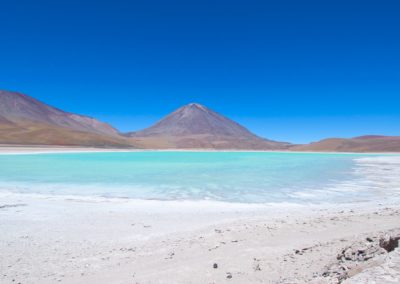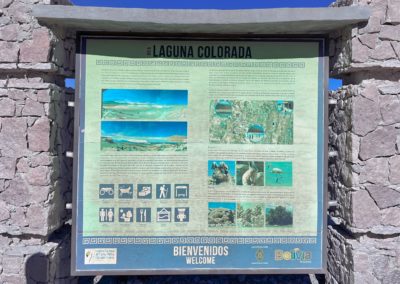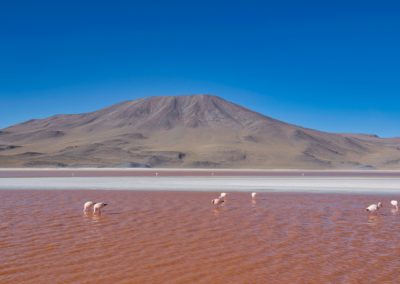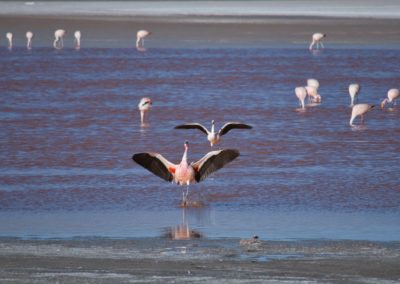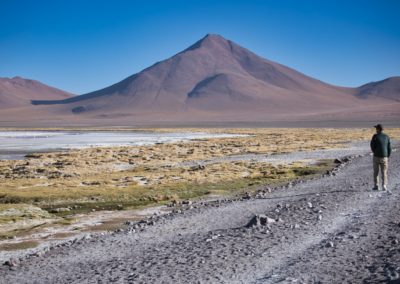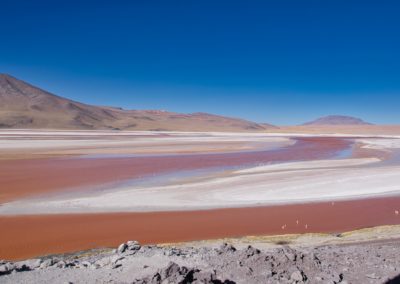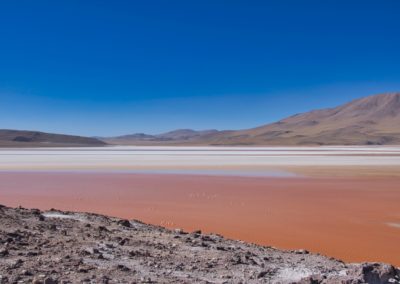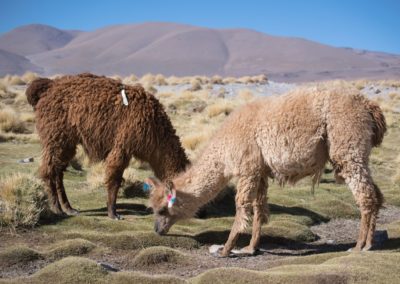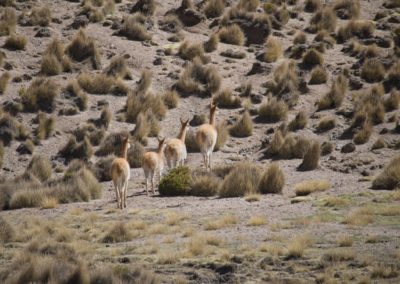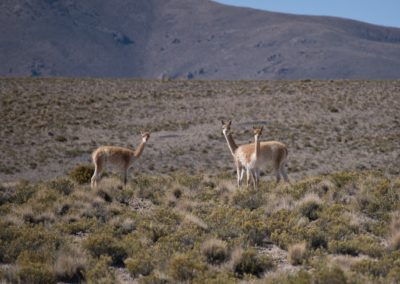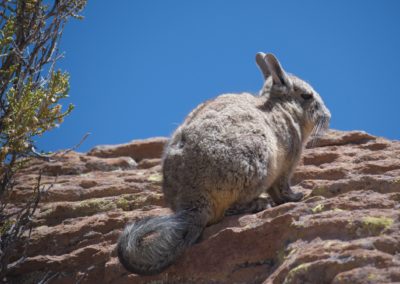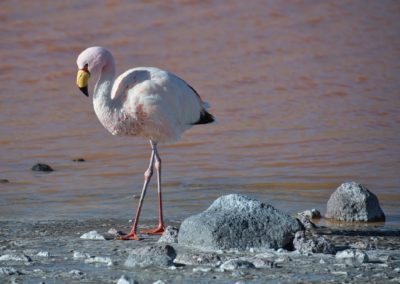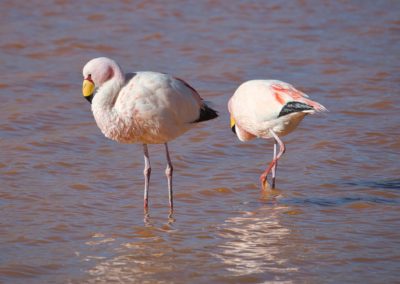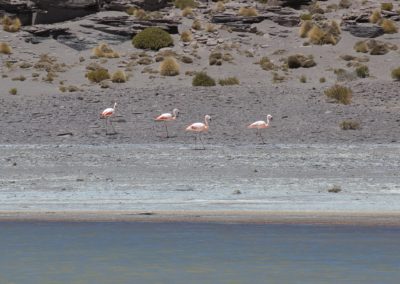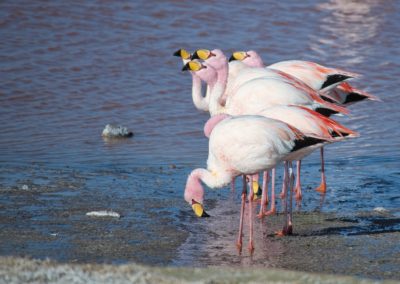eduardo avaroa national reserve
Bolivian Altiplano from Tupiza to Uyuni
Along with Vicente – our guide and driver – and our cook Marco, we continue our journey across the Bolivian high plateau. After exploring the Tupiza region and its fascinating sandstone formations, we are now heading to the Eduardo Avaroa National Reserve at the south-western tip of Bolivia.
On the way to the reserve
On the second day of our tour, we begin the long journey to the Eduardo Avaroa National Reserve. The bumpy roads slow down our progress and we are constantly shaken in the car. This gives us even more time to appreciate the unspoilt and arid landscape of the high plateau, which often reminds us of our trip to Tibet. Along the way, we also regularly pass by pretty lagoons and we finally arrive at the park at the end of the day.
Our highlights
Crossing the high plateau
Unspoilt landscapes
Lagunas
Wildlife
Arrival in the nature reserve
A park full of gems
Established in 1973 to protect the wildlife living there, the Eduardo Avaroa Nature Reserve has become Bolivia’s most popular national park in terms of number of visitors. Although its notoriety is nowhere near that of the Salar de Uyuni, this varied reserve, situated at altitudes between 4100 and 4900 meters, has much to offer in terms of scenery. Some forty mountains over 5000 meters can be found here, including several active and inactive volcanoes.
With a cold and biting wind whistling in our ears, we visit this magnificent reserve under a brilliant blue sky. We pluck up courage, brave the cold and the wind and are rewarded with a nice bath in natural hot springs. In this volcanic landscape, we also encounter geysers, fumaroles and mud pools.
We also cross the vast and stunning Dalí Desert. The latter was named after the Spanish painter Salvador Dalí because the desert shapes and colors resemble the landscapes in his works. The park also features numerous beautiful and colorful lagoons, home to thousands of flamingos.
Our highlights
Laguna Celeste
Laguna Verde
Laguna Colorada
Geysers & fumaroles
Dalí Desert
Polques hot springs
Laguna Celeste
One of the most beautiful lagoons we are lucky to visit is Laguna Celeste. Situated at an altitude of around 4500 meters at the foot of the Uturuncu volcano (6008m), we are impressed by the almost unreal sky-blue color of its water. The color of the lagoons is due to the strong presence of minerals in the water: at Laguna Celeste, magnesium and manganese mainly give the water its distinctive blue hue.
We are the only tourists here. Isolated in the midst of Bolivian nature, we are speechless at the unique landscape before us. We savor the peacefulness and enjoy every second of this timeless moment.
Our highlights
Laguna Celeste
Uturuncu volcano
Peacefulness
Color of the water
Laguna Verde
On the border with Chile and still in the middle of the desert, we discover Laguna Verde. Here also, a volcano rises to the horizon: the Licancabur volcano, 5916 meters high. The panorama is so flawless that you could almost think that the elements had been meticulously placed to form a perfect landscape.
The bright green color of the water comes from the high concentration of lead, sulfur, magnesium, arsenic and calcium carbonate. The color of the lagoon can vary from turquoise to dark green, depending on the wind and the movements of the sediments in the water. Unlike other lagoons in the park, due to the high and toxic concentration of minerals, flamingos are not found here.
Our highlights
Laguna Verde
Laguna Blanca
Licancabur volcano
Road to the lagoon
Laguna Colorada
Here is finally the highlight of the day: Laguna Colorada. It is not just sediments that are responsible for the lagoon’s color, but also the red algae present in the water. This particularity makes Laguna Colorada especially captivating and aesthetic with a mix of incarnate stretches where algae are present and whitish stretches where the sediment of the mineral borax is found.
We start our visit by taking a short stroll along a small path on the hilltop above the lagoon and enjoy a lovely panoramic view. We then walk down to the lake shore to have a closer look as hundreds of flamingos wade through the lagoon’s bright red water in search of food.
Our highlights
Laguna Blanca
Panoramic view
Coloration of the lagoon
Flamingos watching
Short walk
Wildlife
This desert and volcanic landscape is home to various animal species. We see numerous llamas, elegant vicuñas living in the wild, and are also lucky enough to spot a culpeo – an andean fox – cautiously approaching our car.
As we enjoy our lunch by a small lagoon, we also spot several viscachas. These adorable rodents, whose appearance is somewhere between that of a rabbit and a mouse, are extremely fast and agile. Perched on the rocks, they are also happy to take a break and sunbathe.
At the edge of the lagoons, we regularly see dozens, even hundreds, of flamingos. It is fascinating to watch them fly away, wade into the water or put their heads into the water and raise them to the sky again as they feed. There are six species of flamingo in the world, three of which can be seen at Laguna Colorada: the Chilean flamingo, the Andean flamingo and the extremely rare James’s flamingo.
Our highlights
Llamas
Vicuñas
Flamingos
Culpeo
Viscachas

